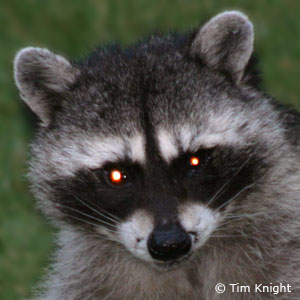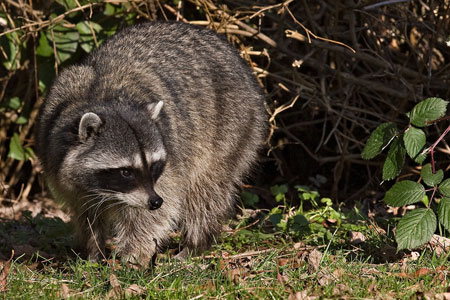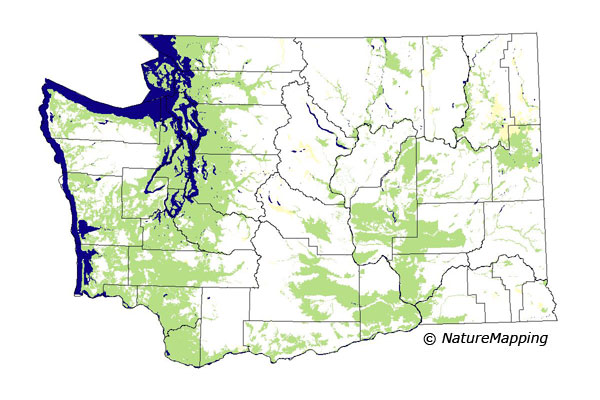
NatureMapping Animal Facts
Raccoon
|
Northern Raccoon (Procyon lotor)

Raccoons are members of the Family Procyonidae which includes the cacomistle, kinkajou and coatis. Range / Habitat: Raccoons are found across southern Canada, throughout most of the United States, and into northern South America. Raccoons prefer to live in moist woodland areas. They can also be found in farmlands, suburban, and urban areas.
Click the range map to learn more about the distribution of Raccoons in Washington. Diet: Raccoons are omnivorous and opportunistic animals. Plant foods vary from fruits to nuts, including wild grapes, cherries, apples, persimmons, berries, and acorns. Where available raccoons may also eat peaches, plums, figs, citrus fruits, watermelons, beech nuts, and walnuts. They also forage for crayfish, insects, rodents, frogs, fish, and bird eggs. Raccoons are opportunistic and have adapted to eat trash and other food available in suburban and urban areas. (ADW) 
Behavior: Raccoons are nocturnal, but can occasionally be seen during daylight hours. They are solitary animals and the only social group raccoons form consist of a mother and her young. Although they move slowly, with a shuffle like walk, they can reach speeds of 15 miles per hour on the ground. Raccoons climb with agility and are can withstand a drop of 35 feet from a tree. Raccoons are excellent climbers and strong swimmers. Reproduction: Raccoons mate between late January or early February. Male raccoons are polygamous, or will mate with several females in succession. Females, however, are monogamous, and will mate with only one male and will not tolerate other males after mating has occurred. Lifespan/Longevity: Raccoons have been known to live a maximum of 16 years in the wild. A captive animal was recorded living for 21 years. The life span of raccoons in the wild is estimated at three to five years.
Did you know?

Adult Raccoon (Natures Pics)
More information: Photo Credit: Tim Knight; Natures Pics |
